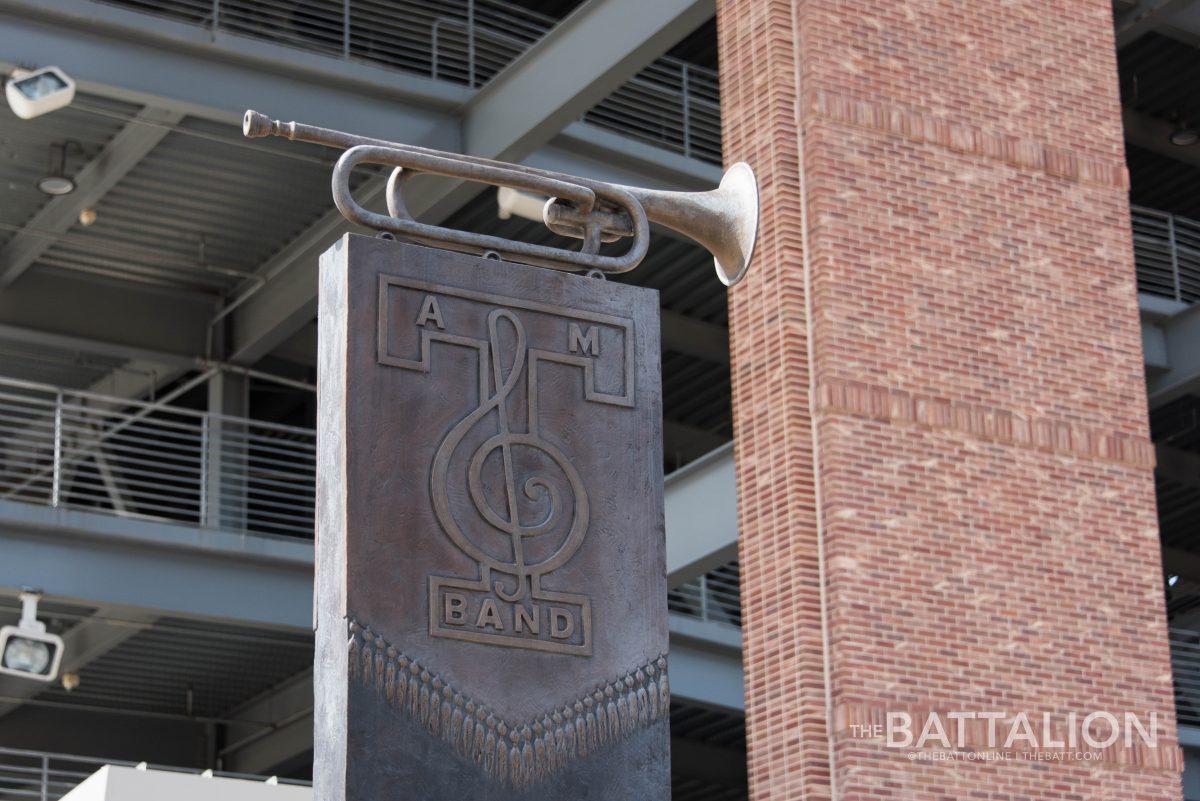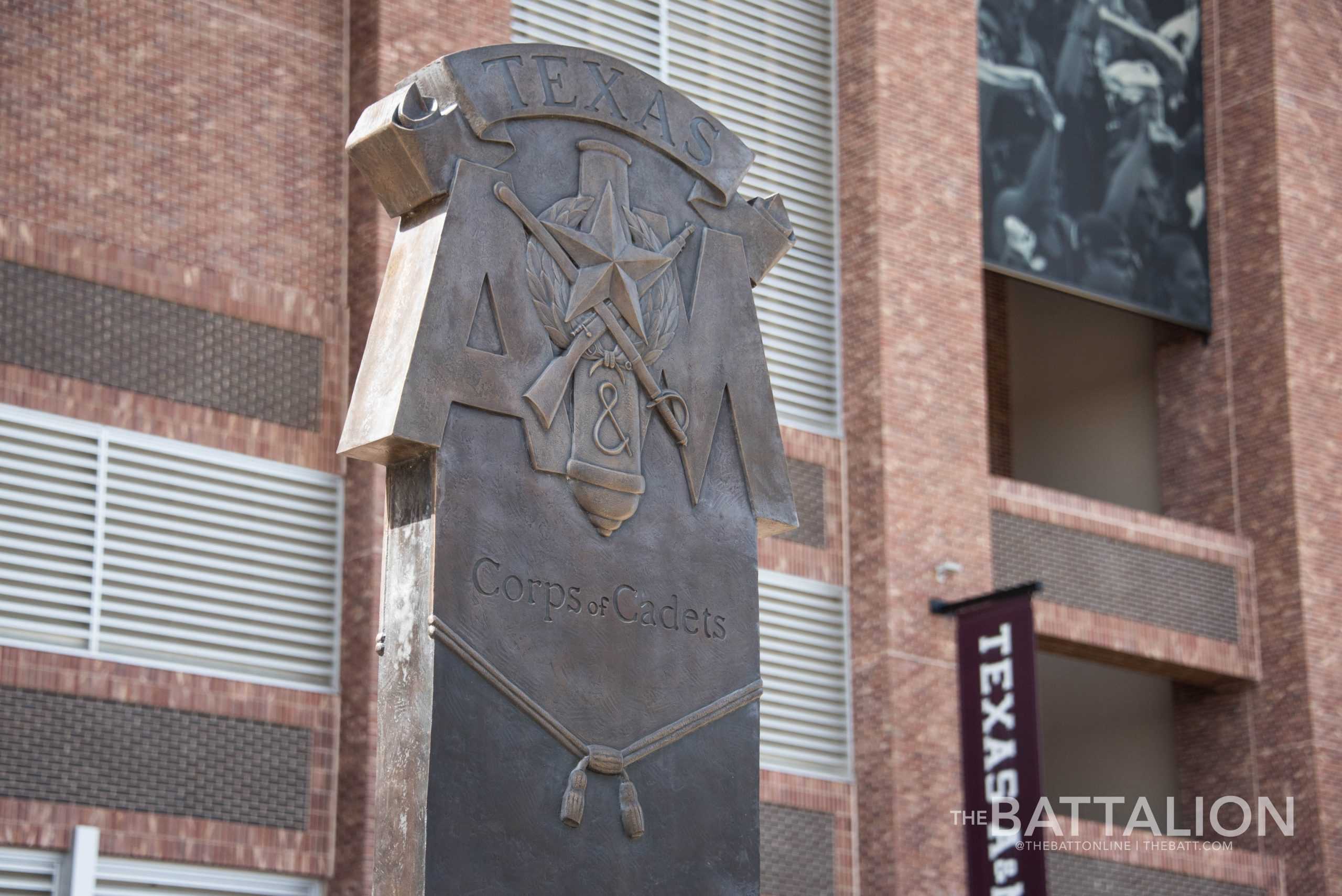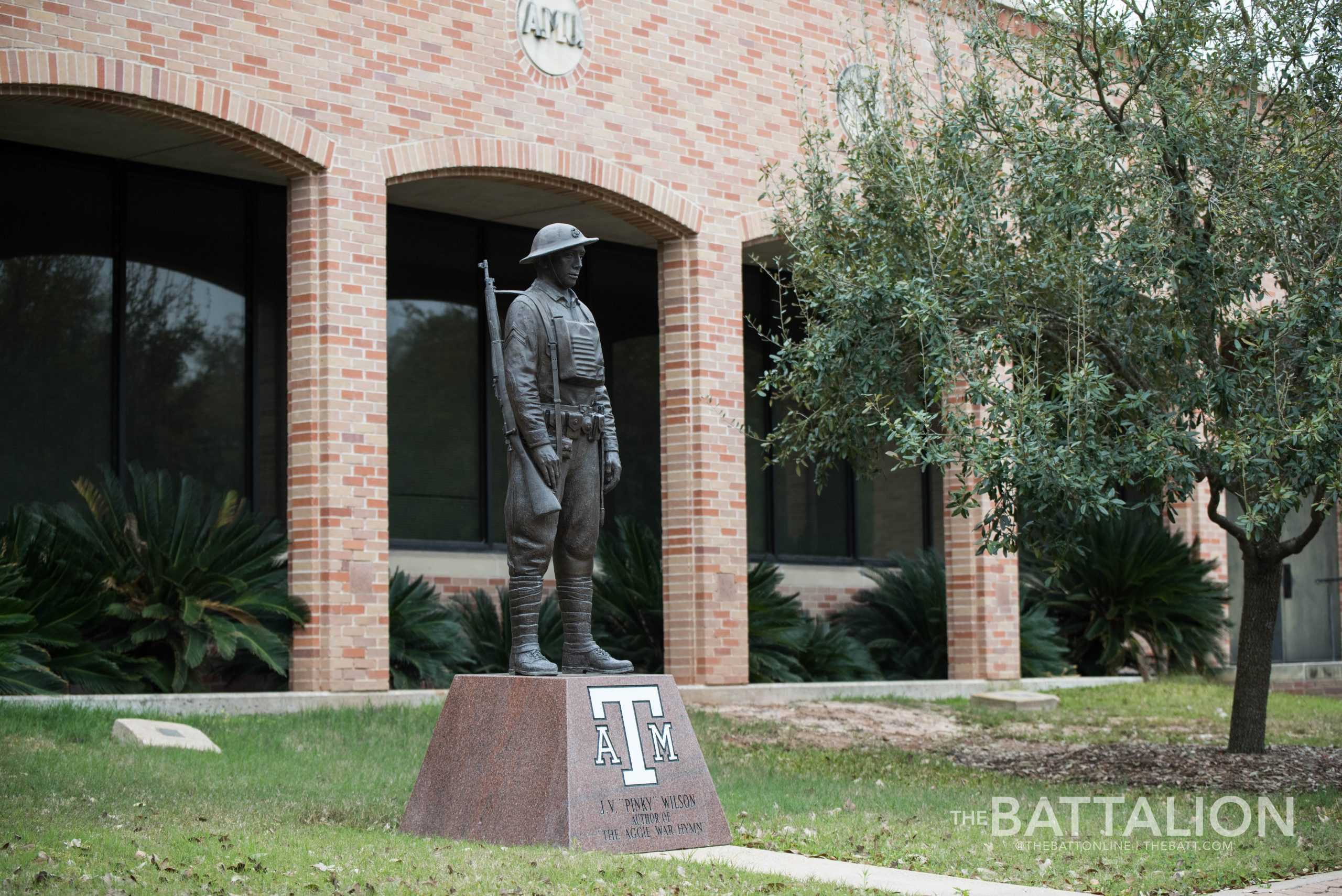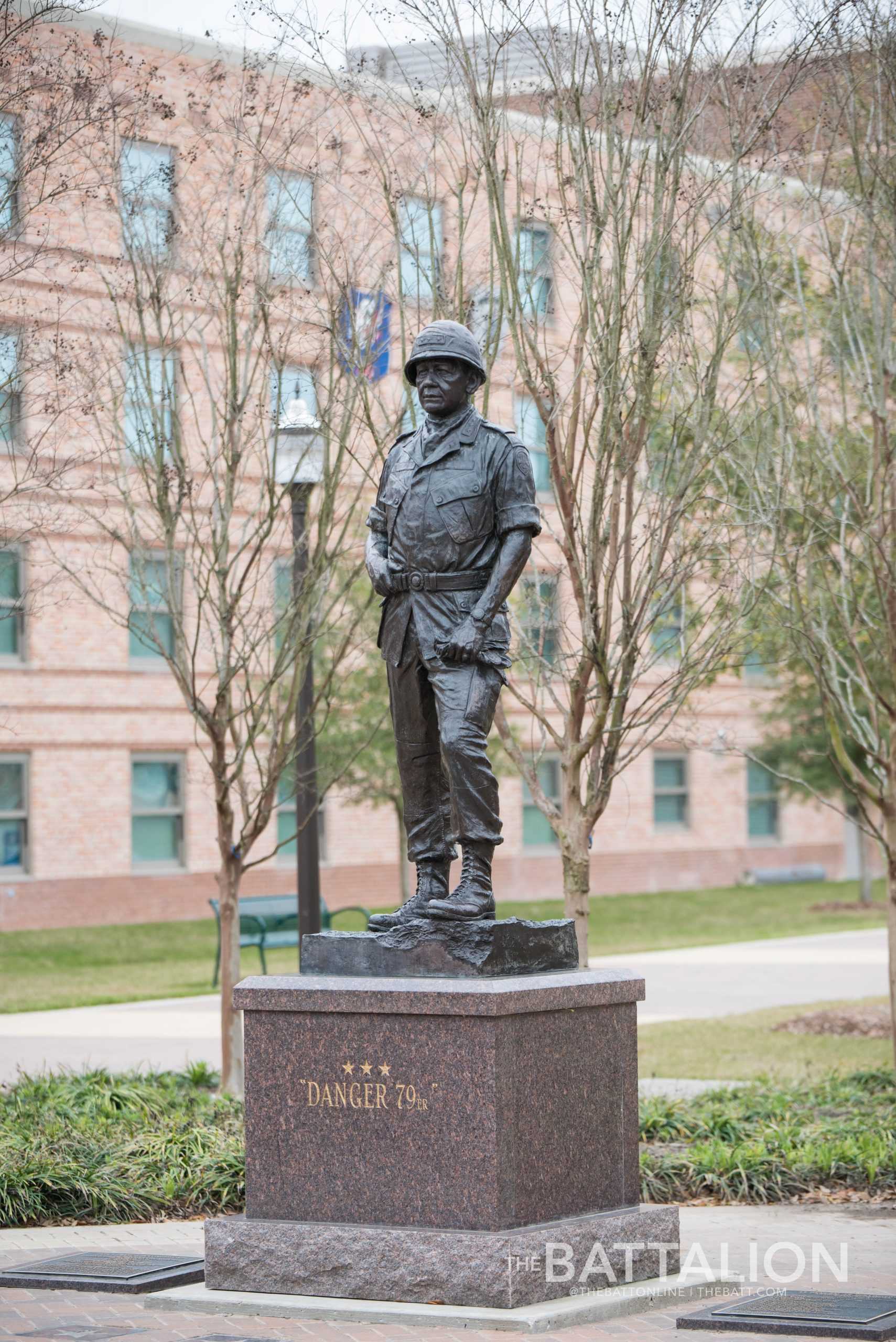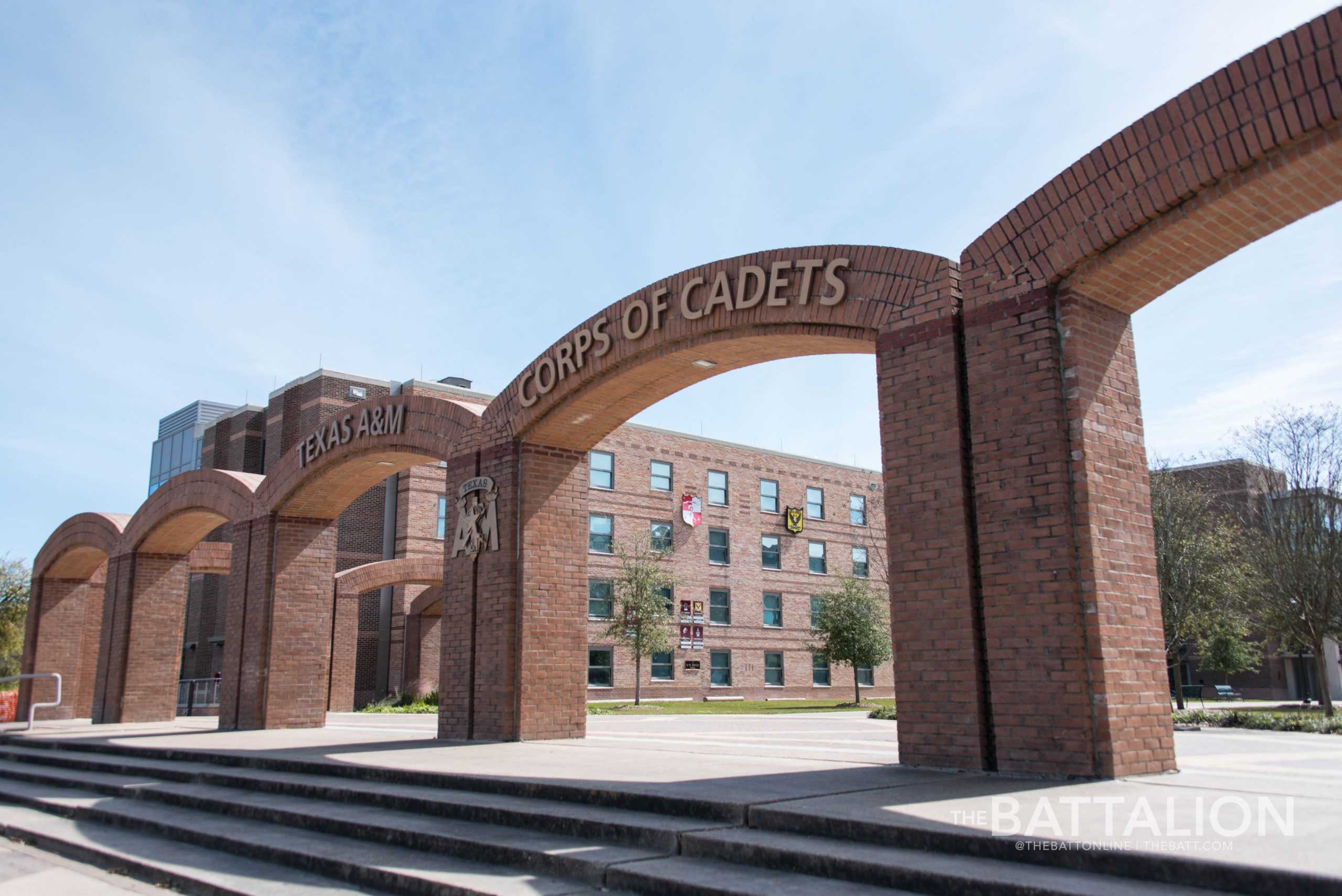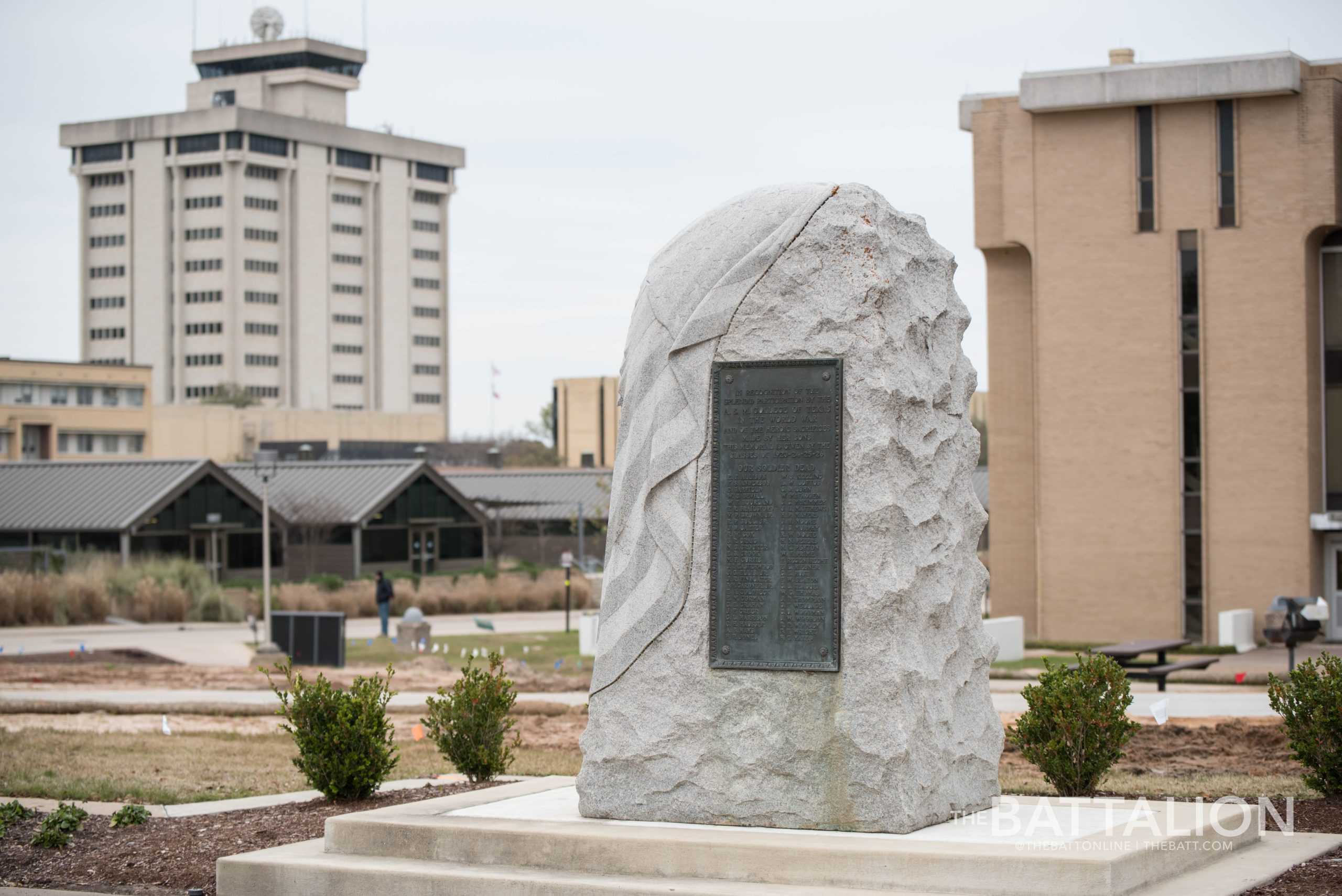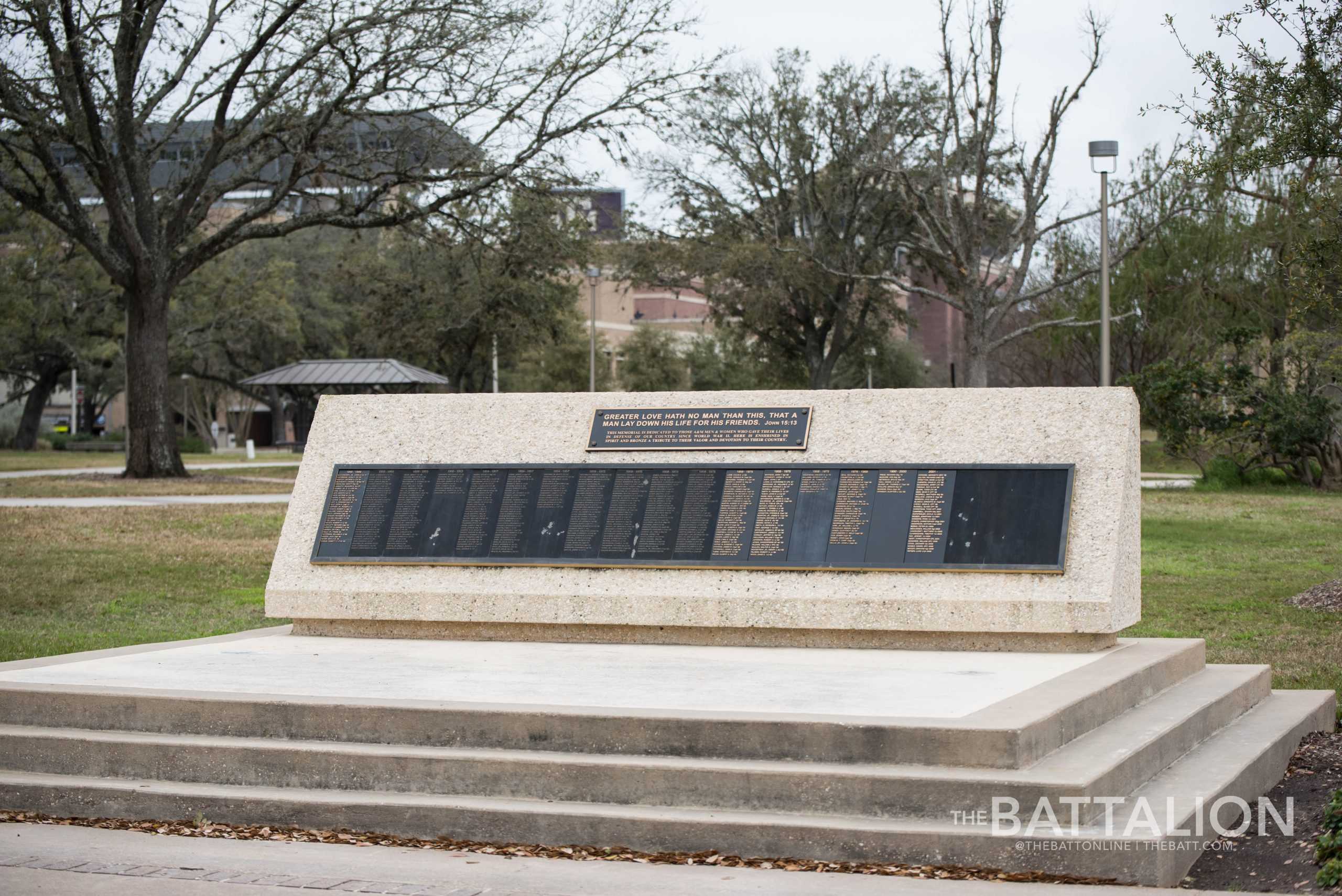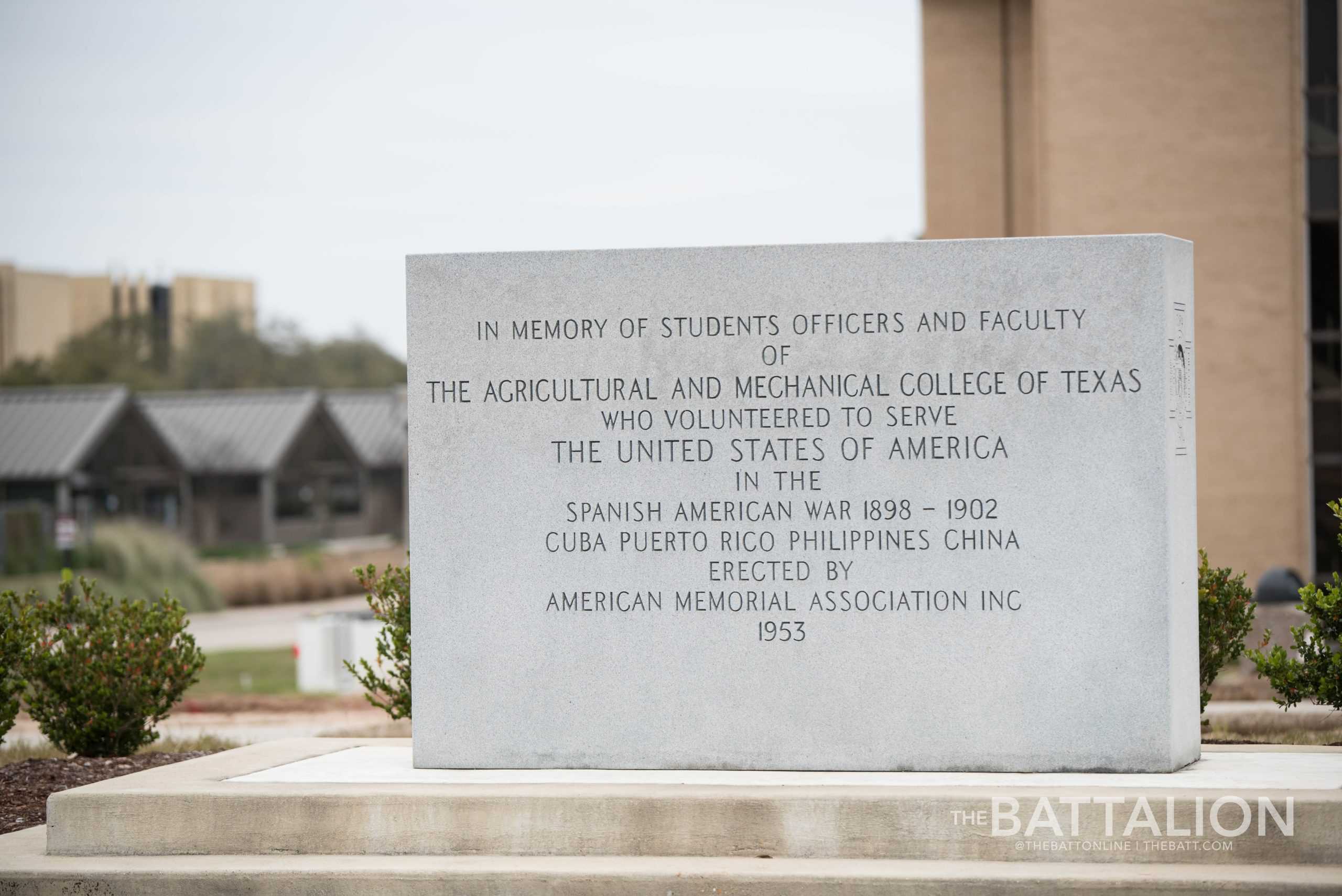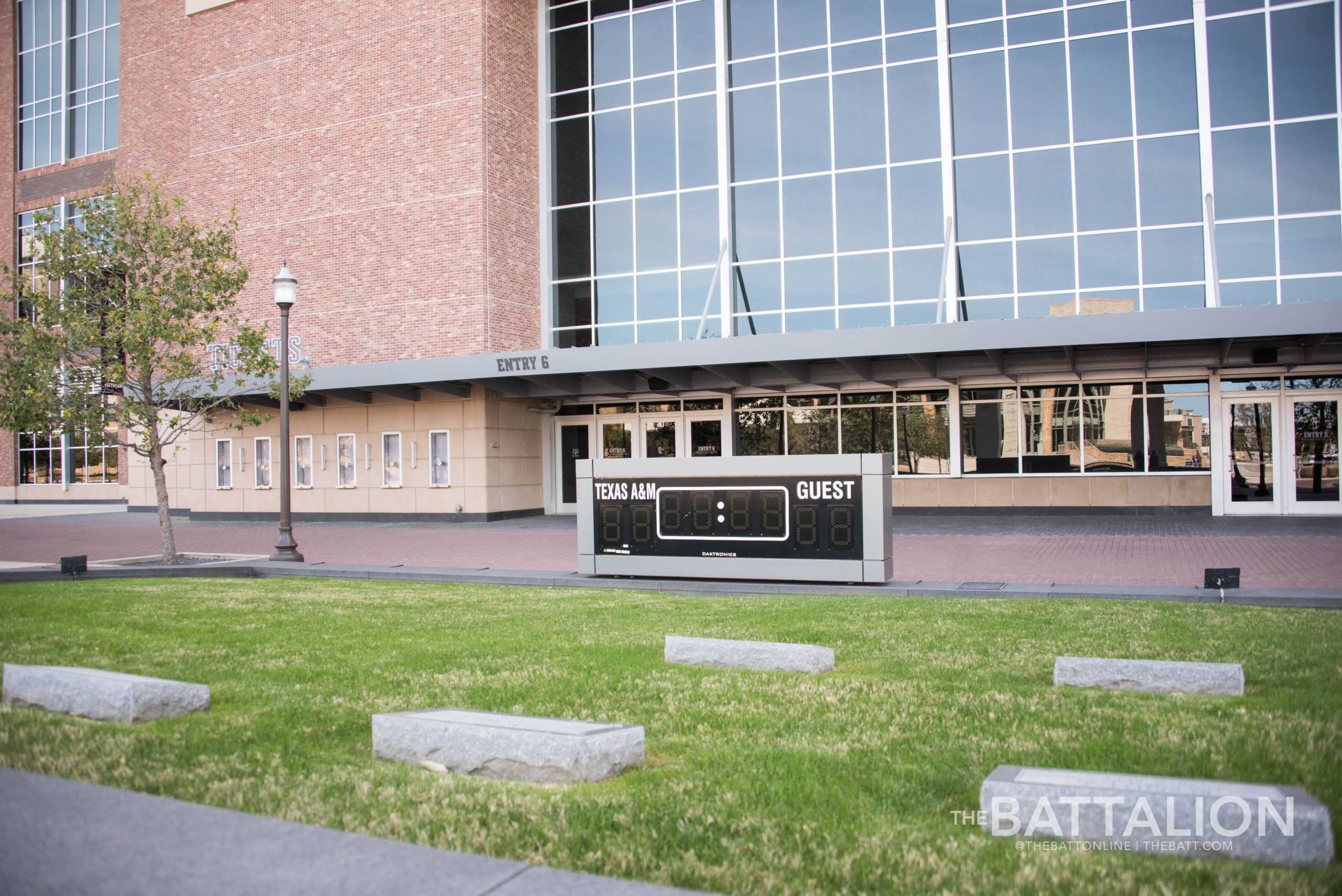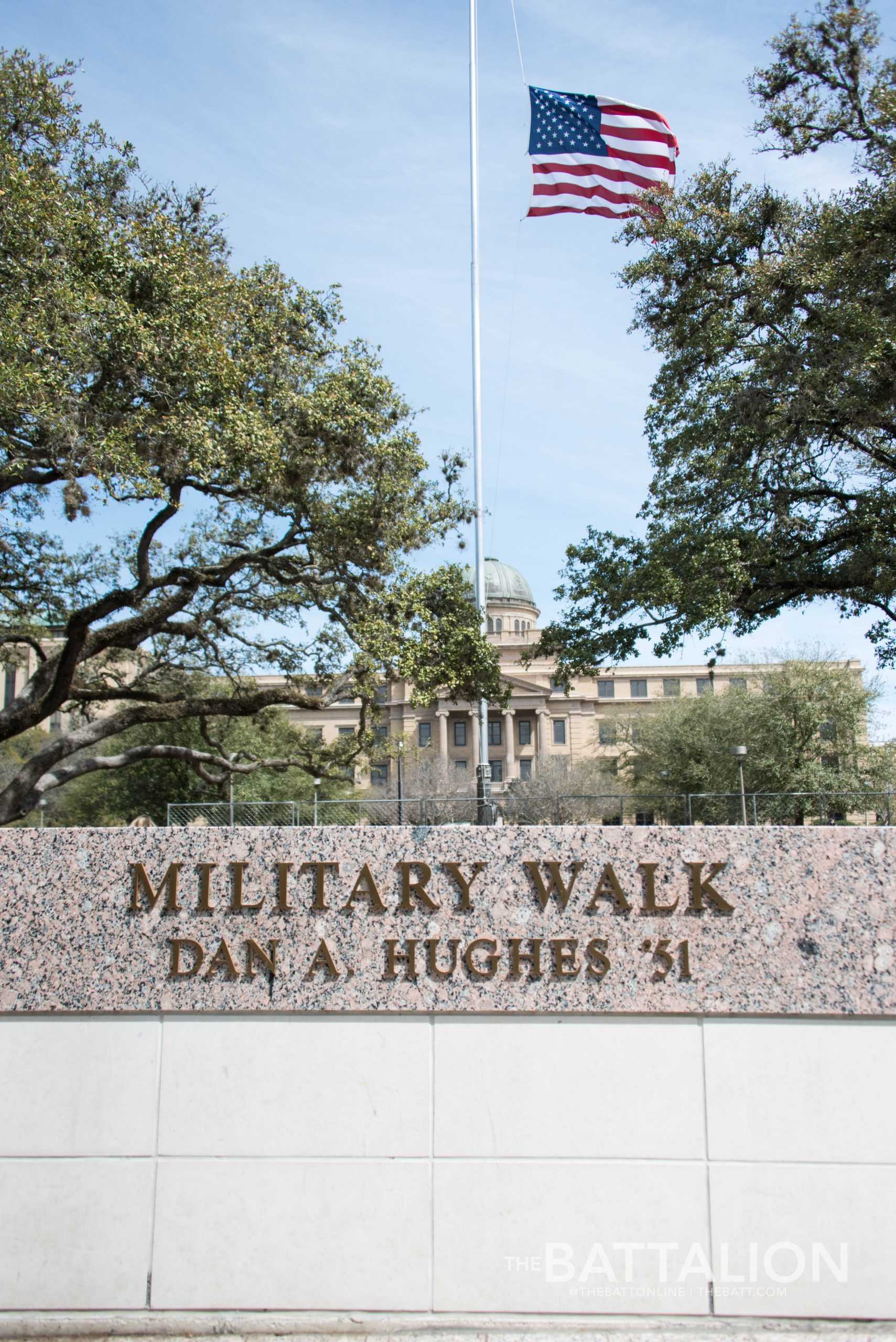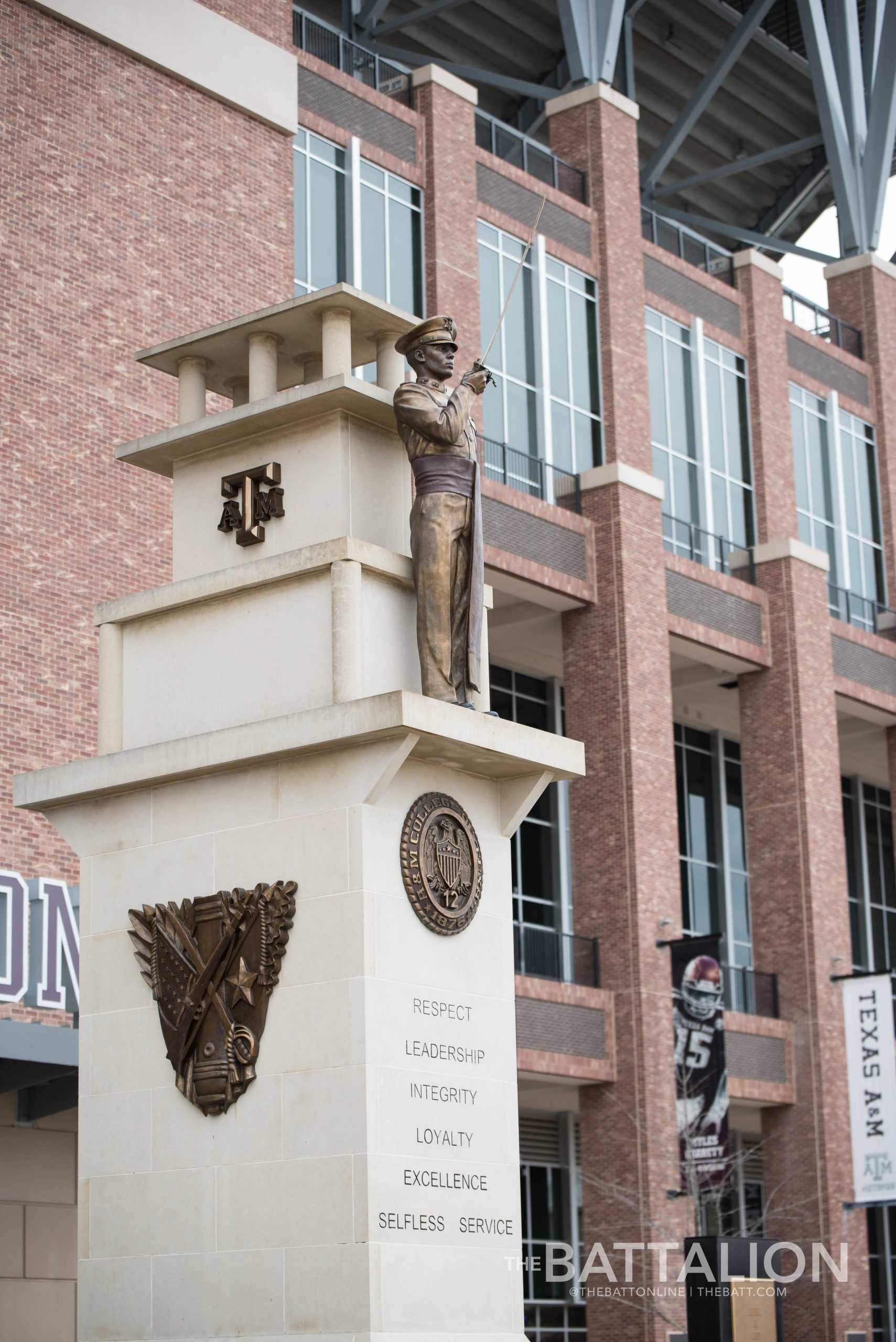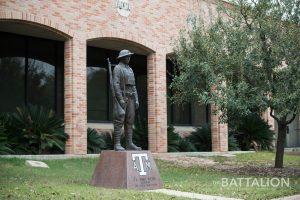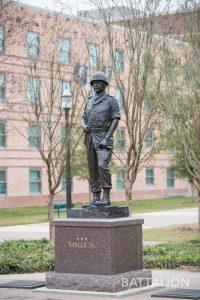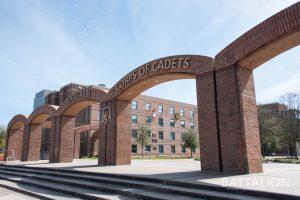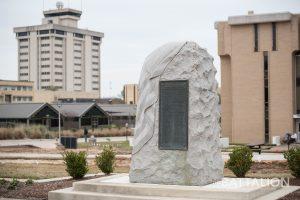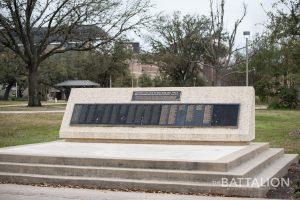As the oldest organization on campus, the Corps of Cadets is interwoven into the traditions and history of Texas A&M. This history can be seen through the many statues and pillars around campus that are dedicated to the Corps and the military. Here are some of the Corps-related landmarks that can be seen around the A&M campus.
The Core Values of Texas A&M Monument
Location: West side of Kyle Field
Installed: 2015
History: The 24-foot monument represents the core values of A&M — respect, leadership, integrity, loyalty, excellence and selfless service. All six core values and pieces from the Aggie Ring are depicted on the monument, along with a sabre-weilding Ross Volunteer placed on the third tier. The back of the monument starts with rough limestone and then smooths out as it goes to the floor. This is meant to represent the journey that an A&M student will go through during their time at the university.
Fightin’ Texas Aggie Band Pillar and Corps of Cadets Pillar
Location: East side of Kyle Field
Installed: 2014
History: These two monuments stand on the east side of Kyle Field and represent the storied history that both the Aggie Band and Corps of Cadets have with A&M football. Each one is topped with their respective symbols. They were two of five monuments to be unveiled during the first phase of the stadium’s reconstruction.
Pinky Wilson
Location: West side of Sam Houston Sanders Corps of Cadets Center
Installed: 2008
History: At midnight yells, sporting events and graduation, the Aggie War Hymn can be heard from all generations of Aggies. James Vernon “Pinky” Wilson, Class of 1920, was the author of this A&M anthem, first writing the lyrics while fighting in World War I. The brass statue outside of the Corps of Cadets Center shows Wilson in his army uniform.
Danger 79er
Location: Center of Corps Quadrangle
Installed: 1999
History: Lieutenant General James F. Hollingsworth — known by his radio call sign Danger 79er — served 36 years in the military spanning from World War II to the Korean and Vietnam Wars. Hollingsworth was Class of 1940, and according to his obituary, is the most decorated officer from the university. He has received three Distinguished Service Crosses, four Distinguished Service Medals, four Silver Stars, three Legions of Merit, three Distinguished Flying Crosses, one Soldier’s Medal and six Purple Hearts for his service.
Corps Arches
Location: Entry to Corps Quadrangle
Installed: 1975
History: The Corps Arches serve as the entry to the quad — the center of Corps housing — and are held up by 12 pillars, meant to represent the 12th Man spirit of A&M. The arches were built to celebrate the 100th anniversary of the university. They feature the Corps’ emblem with “Texas A&M Corps of Cadets” spelled across the top.
World War I Memorial
Location: In front of Corps Arches
Installed: 1924
History: To honor the 60 Aggies who died in World War I, the World War I Memorial, also known as the West Gate Memorial, displays names of the fallen soldiers and an American Flag carved in the granite. The plaque on the monument reads, “In recognition of the splendid participation by the A&M College of Texas in the World War and of the heroic sacrifices made by her sons. This memorial is given by the class of 1923-24-25-26.”
Corps Plaza Memorial
Location: Entry of Corps Arches
Installed: 1969, moved to the Quad in 1976
History: Paying tribute to the Aggies who were killed in action from 1945 to 2001, the Corps Plaza Memorial is a plaque located at the Corps Arches. The plaque also includes the verse John 15:13, which reads, “Greater love hath no man than this, that a man lay down his life for his friends.”
Spanish-American War Memorial
Location: In front of the Corps Arches
Installed: 1953
History: Given to A&M by the American Memorial Association, the Spanish-American War Memorial is dedicated to the student officers, faculty and alumni who fought in the Spanish-American War and related conflicts.
Reveille Cemetery
Location: Richardson Zone Plaza
Installed: 2000
History: Reveille I-IV were buried with her head and paws towards the scoreboard at the north entrance of Kyle Field. This tradition began in 1944 when Reveille I died, but changed in 1977 when Kyle Field expanded and the former first ladies were moved to Cain Park. After another Reveille was added to the cemetery, I-V were moved to the Richardson Zone Plaza in 2000. Since then, Reveille VI-VIII have been buried there as well. Despite the change, the tradition of having Reveille facing the scoreboard to watch the outcome of the games continued after a scoreboard was installed at the cemetery.
Military Walk
Location: Walkway between Sbisa Dining Hall and James Earl Rudder Statue
Installed: First paved in the early 1900s
History: Military Walk was originally a path traveled by cadets as they marched across campus in formation. In the early 1900s, Military Walk was a paved road before becoming a pedestrian pathway in the 1970s. In 2010, the walkway was refurbished, and several informative markers were added to document the university’s history.
Corps and military monuments on campus
March 6, 2019
Donate to The Battalion
Your donation will support the student journalists of Texas A&M University - College Station. Your contribution will allow us to purchase equipment and cover our annual website hosting costs.

















